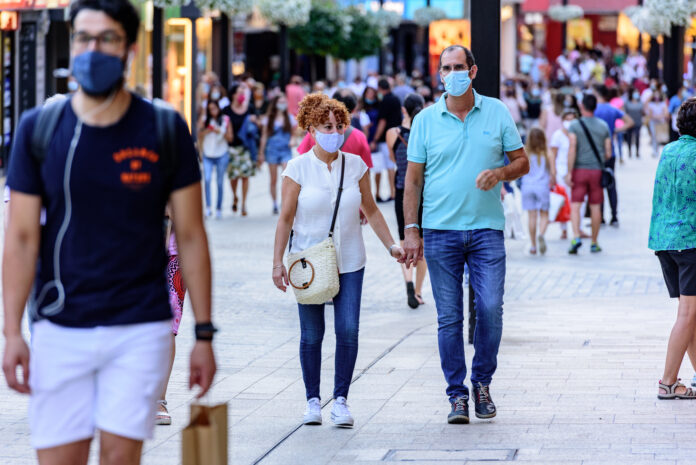This summer, like every summer since COVID-19 arrived on the scene, the U.S. is experiencing a spike in infections and hospitalizations.
Only this time, there’s good news: The number of infections hasn’t increased as much as in past summers. Plus, most people with COVID-19 are reporting mild symptoms, and hospitalizations in the U.S. are significantly lower than they were last year at this time.
At the end of July 2022, some 38,000 people nationwide were hospitalized with COVID-19. Late July 2023 saw 7,000 patients hospitalized—just 18% of July 2022 hospitalizations. Although it’s the highest number of COVID-19 hospitalizations since June, it’s also a lower number than any point in previous years during the pandemic.
Infectious disease specialist Jonathan D. Grein, MD, director of Hospital Epidemiology at Cedars-Sinai, said that experts aren’t sure why COVID-19 surges in the summer months, though there are many theories.
“We expect surges in the winter—that’s when we typically see a lot of respiratory viruses circulate,” Grein said. “But we also see respiratory infections in the summer, and COVID-19 is no exception. One reason for this summer’s uptick in cases could be that people’s immunity has waned over the course of the year, but really, it’s just speculation.
“The bottom line is that we should all be mindful that we’re seeing more COVID in our community right now, and we shouldn’t let down our guard.”
Still, today’s COVID-19 reality is much different from the early days of the pandemic, when COVID-19 was the third-leading cause of death in the U.S. between March 2020 and October 2021, according to the National Institutes of Health. Today, most patients with COVID-19 who are hospitalized at Cedars-Sinai Medical Center are hospitalized for unrelated reasons, Grein said, and were incidentally found to have the virus.
“It’s important to keep in mind when looking at hospitalization data that it doesn’t always necessarily reflect severity of illness,” he said. “We have seen some sicker patients requiring higher levels of care—especially among those who were already at risk for severe illness—but the good news is that it’s been relatively infrequent, particularly compared to other surges.”
People who are at high risk of developing serious complications from COVID-19, such as organ transplant and cancer patients, are especially encouraged to take more precautions during the summer surge and avoid situations where they could be exposed to the virus, Grein said.
Those precautions include wearing a well-fitted mask indoors and in crowded areas, washing hands often and thoroughly, avoiding people who are sick, eating outdoors when possible, socializing in well-ventilated indoor areas, and for everyone—high risk or not—staying up to date on COVID-19 vaccinations.
The Centers for Disease Control and Prevention (CDC) reports that only 17% of the U.S. population has received the most recent bivalent vaccine, which was introduced in September 2022. An updated booster targeting the newer strain, Omicron subvariant XBB.1.5, is expected by fall 2023. The CDC has not yet recommended who should receive the newest booster.
“The vaccine may not prevent everyone from getting COVID-19, but it will certainly reduce your risk of becoming very ill,” Grein said.
If you do get sick, he added, test for COVID-19, stay home and rest. Also, he advised knowing in advance what treatment options are available if you test positive—especially if you’re at higher risk for severe illness.
“Let’s not forget the lessons we learned during the last few years of the pandemic about ways to stay safe,” he said. “We should continue to use the tools in our pandemic toolbox as this virus continues to wax and wane.”
Source:
Image: Wirestock/Freepik



































